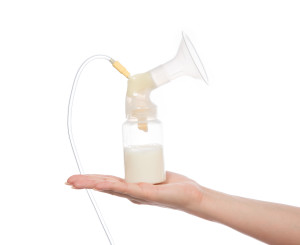Your Common Breastfeeding Problems Solved
 They say that the breast is best, but that doesn’t mean it’s the easiest way to feed your newborn. First time moms are often not prepared for, or aware of, many of the common issues that can be experienced when both you and your baby are learning to work together for the first time. To help ease any breastfeeding nerves and prepare you to overcome any challenges, familiarize yourself with these common scenarios and troubleshooting best practices.
They say that the breast is best, but that doesn’t mean it’s the easiest way to feed your newborn. First time moms are often not prepared for, or aware of, many of the common issues that can be experienced when both you and your baby are learning to work together for the first time. To help ease any breastfeeding nerves and prepare you to overcome any challenges, familiarize yourself with these common scenarios and troubleshooting best practices.
Leaking Breasts
This issue can be as embarrassing as it is frustrating, but it’s not necessarily a bad thing. Leaking helps prevent engorgement (large, heavy, painful breasts—more on that later). Leaking can be unpredictable but often goes away on its own once you are breastfeeding regularly. To mitigate leaking breasts at inopportune times, when you start to sense oncoming milk letdown, apply firm pressure to your breasts by crossing your arms across your chest as if to hug yourself. Also, consider wearing clothes that easily camouflage any uncontrollable wetness.
Engorgement
Frequently occurring in the first several days after a baby is born, in exacerbated cases, engorgement may cause feelings of hard, swollen, throbbing, lumpy, breasts that may even cause you to run a fever. Engorgement may occur if you are not able to nurse your baby frequently enough or empty your breasts sufficiently during each feeding. Complicating matters further, engorgement may make it difficult for your baby to latch onto the breast. To minimize your chances of engorgement, nurse within two hours of your baby being born, and then nurse regularly after that (between eight and 12 times a day after the first 24 hours).
Baby Won’t Latch
Sensing your baby will not or cannot latch to your breast can be particularly stressful but try not to let your anxiety inhibit your ability to work through the process together. There are a variety of reasons why baby can’t latch at first that range from a difficult birth to the shape of your nipples (naturally flat nipples make it difficult for baby to grasp). Depending on the cause, you may have to adjust your troubleshooting technique. In general, however, keep your baby skin-to-skin as much as possible to get him comfortable being close to your chest. Coax baby to feed by expressing a drop of milk on your nipple and encouraging him or her to lick and nuzzle. Also, focus on the best positioning for you both. Support baby by leaning back and allowing his entire body to be supported against you. You can also cradle your baby in a football hold if that is more comfortable.
Baby Isn’t Eating Enough
New moms often fear their baby isn’t getting enough milk. Know that the vast majority of women produce enough milk to satiate their babies and keep them healthy. To determine if your baby is getting enough, make sure he or she is swallowing and is satisfied when complete. When baby first latches, he will suck rapidly to stimulate milk flow, and then move into a deep, slow, pulling rhythm. Look and feel for the sensation of his jaw moving as he swallows. When your breastfeeding session is complete, your baby should seem peaceful and content. A baby that is lethargic or cries for more food may not have gotten enough milk.
If you experience any of these conditions or issues while breastfeeding, speak to your OBGYN or your baby’s pediatrician. Breastfeeding should offer a necessary emotional bonding opportunity for you and your baby and should not be a cause of stress or discomfort.
More
